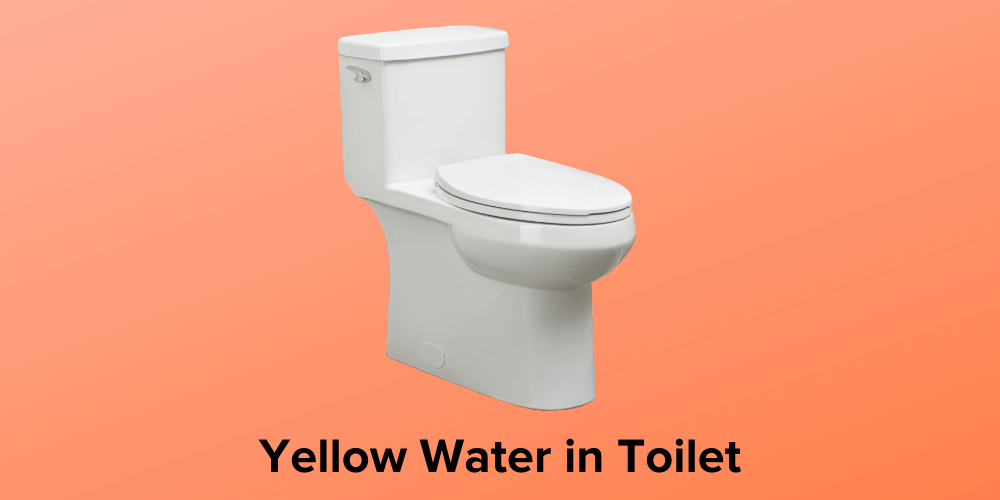Fix yellow water in the toilet with our step-by-step guide that teaches how to fix this problem quickly, safely, and for free! We cover everything from possible causes like rust stains or mineral deposits, what tools are needed (or not), how much time it takes, and even some additional tips like what color markers work best when your kids try writing on the bowl.
I am going to be giving you some information on what the yellow water in your toilet is and how to fix it. First, if you have a lot of people living in your house or if there’s been a recent change in household members, then this could be due to increased urine production.
The second reason why you may have yellow water coming from your toilet is because of too many products that contain metals like copper. There are also health issues such as urinary tract infections and bladder cancer which can cause cloudy urine and thus create more yellow water for the toilet bowl.
Urine contains ammonia which will turn into nitrates when mixed with bacteria found around the bathroom. The last thing that causes clear liquids to turn into yellow ones is an imbalance of acidity.
Contents
How Do You Get Rid of Yellow Water in Toilet?
Have you ever flushed your toilet and the water turns yellow or brown? Here we shared step by step guide for you to fix this quickly.
1- Remove the Toilet Seat and Lid
Toilets can be gross. It is important to clean the toilet, but what about cleaning your backside? In order for you and other users of the bathroom to feel happy and comfortable while using the facilities, it’s necessary that nobody was left with a wet butt or an icky feeling on their hands after washing them. Take off both lid and seat before proceeding!
2- Pour a Pot of Cold Water into the Toilet Bowl
If you’re looking to freshen up the smell in your bathroom, pour a pot of cold water into the toilet bowl. This just might be one of those old-fashioned tips that still work. Pour some iced water from your tap or fridge down there and let it sit for about an hour before wiping off any excess residue. The cool temperature will help eliminate odors lurking around.
3- Few Drops of Dish Soap
Put a few drops of dish soap in the toilet and wait five minutes for it to foam up. If you’re having trouble with your toilet, try adding dish soap. Five minutes is all it takes for the liquid to foam up and get into those tough-to-reach cracks in a cleaning frenzy.
When life presents you with an unsavory task such as scrubbing away stubborn stains, why not make things easier on yourself? With just 5 minutes of waiting time after putting some drops of dishwashing detergent down the drain (or better yet – directly onto them), any dirt or grime will be gone.
4- Flush the Toilet Again, Then Use a Plunger
It is time for an old-fashioned plunger party! Take a paper towel and wet it with hot water. Place the soaked section of your paper towel on top of the clog, then place another dry piece over that area to prevent soapy water from escaping out onto your bathroom floor.
Push down hard on both sides about ten times before attempting anything else or you could risk pushing more moisture into the pipe which will lead to overflow problems in other parts of your house such as bathrooms and kitchens since drainage pipes are connected together underground.”
“It’s not always easy clearing up toilet clogs especially if they seem like they have been there forever but don’t fret because we have got just what you need here: one plunger. (repeat if necessary)
Repeat steps 1-4 with hot water instead of cold
Conclusion:
If you have yellow water in your toilet, it’s likely due to a buildup of organic material like food waste. We’ve provided some easy solutions for this problem that can be done by anyone, including changing the flush mechanism and adding bleach to the bowl before flushing.
To avoid future problems with your toilet tank overflow pipe, contact an expert plumber who will inspect and diagnose any issues found during their inspection. You may want to try these fixes right away if you notice any signs of mold growth or foul odor coming from your sewer venting system as well.
Related Helpful Guides:

